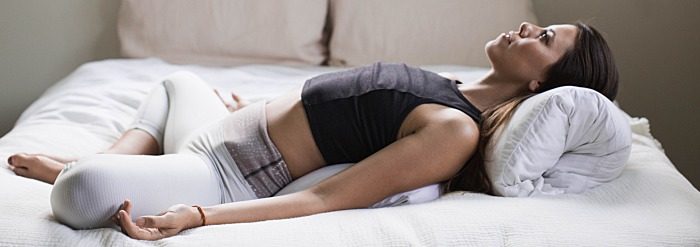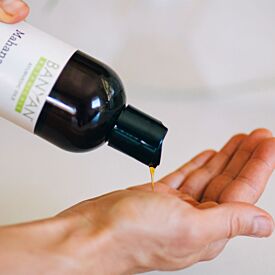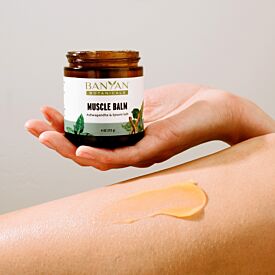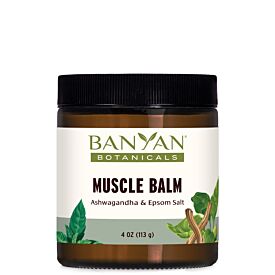10 Gentle Yoga Stretches You Can Do in Bed
Sometimes the biggest obstacle to a daily yoga practice is simply getting out of bed and rolling out your mat. Luckily, there are many beneficial postures you can do before you even set foot on the floor. Whether you’re just beginning your day or unwinding before sleep, these ten easy postures can help to stretch and strengthen your hips, back, and belly, support your nervous system, stimulate digestion, and bring awareness to your breath. This sequence offers supported variations in each posture, so you can try it as an energizing morning routine or a more restorative evening practice to prepare for a restful night’s sleep.
10 Poses to Do in Bed
Easy Pose (Sukhasana)
To begin your practice, find a comfortable seat in the center of the bed. Easy Pose can be done sitting on a pillow or two if your hips feel tight. You may cross your legs so that one shin is folded in front of the other, or simply draw the bottoms of your feet together.
Once you settle in, take a moment to close your eyes. Notice any sensations in the body. If there are areas where you feel overly tense or if you are exerting effort to hold the pose, see if you can relax the effort. In this posture, stillness can give way to greater awareness of the subtleties of the body. Here you can connect with your breath by deepening the inhalation and slowing down the exhalation. Setting the tone for your practice, begin a gentle Ujjayi pranayama with a rhythmic steady inhalation and exhalation.

Seated Side Bend (Parsva Sukhasana)
From Easy Pose, extend your right arm towards the ceiling and reach over to the left side of the bed, bending the upper body. Engage your lower abdominal muscles to support the spine and soften your shoulders away from your ears. You may place your left hand and forearm on the bed for stability as you bend deeper to the side. Turn your gaze towards the underside of the raised arm or towards the palm of your hand. Take 5 breaths and repeat on the other side.
Child’s Pose (Balasana)
Uncross your legs and come onto your shins. Draw the feet together as you widen your knees and fold the upper body forward between your legs. Your arms can be stretched out in front of you or resting back towards your feet with the palms facing up. One variation that is more active for the shoulders is to bend your elbows and take your palms together in prayer behind your neck, with your thumbs resting towards your C7 vertebrae. Take 10 deep breaths here, focusing on breathing into the mid-back and expanding around the ribcage. Child’s Pose is an excellent posture for both relieving tension from the upper back and shoulders while releasing the psoas and encouraging opening around the hips.
For a supported option, try stacking two pillows on top of each other and resting your torso on top with your knees wide apart and the big toes touching. Turn your head to rest an ear on the pillow, close your eyes, and melt into this restorative variation of Child’s Pose. Your arms can rest on the sides of the pillow or underneath.

Seated Forward Bend (Paschimottanasana)
Moving into Seated Forward Bend, extend your legs straight out in front of you and flex your toes back towards your shins. Lightly engage the quadriceps. Place your hands by your hips, extend through the crown of your head to lengthen the spine, and relax your shoulders. Keep a slight engagement in the lower abdominal muscles to support the spine. As you inhale, reach your arms towards the ceiling. As you exhale, fold your upper body towards your legs and lower the hands to wrap around your feet, ankles, or calves—modifying your grip to meet your flexibility. Continue to lengthen the spine as you extend the crown of your head towards your feet. Breathe deeply for 5–10 breaths, each breath drawing your rib cage away from your hips and creating space in the spine. When you’re ready to transition out of this pose, maintain the engagement of the lower abdominal muscles and quadriceps as you lift the upper body back up to a seated posture.
For a supported variation, place a pillow or two on top of the legs and rest your body on the pillows, turning your head to one side for 5 breaths and to the other side for the remaining 5. Add more pillows as needed so the body is supported and can relax into this restorative posture.
Knees to Chest Pose (Apanasana)
Lie on your back and draw your knees toward your chest. Wrap your hands or arms around your legs. Take 5–10 deep breaths, drawing your knees closer into your chest with each exhale. The pressure on the abdomen improves digestion, releasing bloating from the belly and tightness in the low back.
Revolved Abdomen Variation (Jathara Parivartanasana)
From Knees to Chest, transition into Revolved Abdomen. With knees drawn towards your chest, extend your arms out to the sides at shoulder height. Pressing into the arms and engaging your pelvic floor and abdominal muscles, slowly lower your legs over to the right side of your body as you exhale. Take 5–10 deep breaths in this posture. To come out of the posture, actively engage the abdominals and lift your legs back to center, using your hands for additional support if needed. Repeat on the left side.
If you feel any discomfort in the hips or back, place a pillow between the knees. As another modification to this posture, you may place a pillow beneath the stacked legs to elevate them, decreasing the degree of the twist. Similar to Knees to Chest, this posture supports the digestive fire (agni) and strengthens the abdominal muscles.
Supine Pigeon (Eka Pada Rajakapotasana Variation)
Supine pigeon is sometimes known as Eye of the Needle. Begin this pose by lying on your back. With your feet on the bed, bend both knees about hip distance apart. Cross your right ankle over your left thigh just above the knee. Lightly flex your toes back towards your shins. You may want to stay here if this is enough sensation in your outer hips. If you would still like more stretch in the hip, lift your left foot off the bed, drawing your left knee towards your chest. Clasp your hands behind the left thigh and use your right elbow to gently press the right knee away from your body, deepening the external rotation in the right hip. Relax any tension in the shoulders, neck, or jaw. Take 5–10 breaths in this posture. Release and repeat with your left ankle crossed over the right thigh.
Reclined Bound Angle Pose (Supta Baddha Konasana)
To set up for this posture, come to a seated position, place a pillow behind the lower back, and lie down so that the pillow supports the length of your spine. If needed, put a second pillow under your head. Bend the knees with your feet on the bed, then open the knees out to the sides with the soles of your feet together, externally rotating the thighs as they relax towards the bed. Here you can also place a pillow under each knee for support to the inner thighs. You can rest your hands on your legs or lay your arms by your sides. Take 10–20 breaths in this posture, allowing the hips and inner thighs to relax into this posture as you breathe. To transition out of it, use your hands to gently draw your legs back together and roll to one side off the pillow.

Legs-Up-the-Wall (Viparita Karani)
To do this pose, move to the wall or headboard and remove any pillows so that you have a flat area to lie down. Lying on either side of your body, get your buttocks as close to the wall as you can, then roll on to your back. Now, extend your legs straight so the backs of the thighs, calves, and/or heels rest on the wall. This may take a little wiggling to get into! Once there, you may want a pillow under your hips for support in this posture. Then, place one hand on your heart and one hand on your belly for a calming, nurturing effect. Close your eyes, and rest in this inversion for up to 10 minutes. To transition out of this pose, bend the knees into the chest and pause for a moment to bring the blood flow back into the lower limbs. Gently roll to one side when you are ready to sit up.
Supported Savasana (Corpse Pose)
Conclude your gentle stretches with Savasana. Lie down on your back and place a pillow under your knees for support. Keep your head flat on the bed in alignment with your spine. Use a blanket to cover yourself to stay warm. Release any controlled breathing and fully relax all effort for 5 to 10 minutes. If you’re just starting your day, you may want to set an alarm so you don’t fall back asleep!













